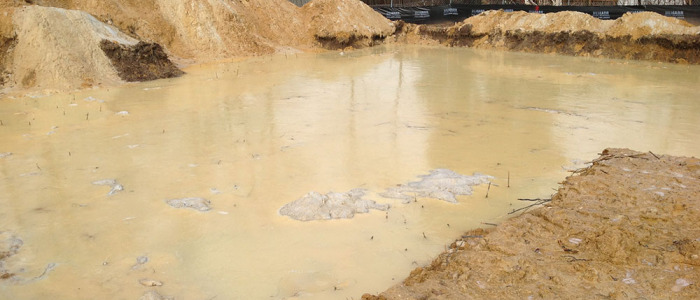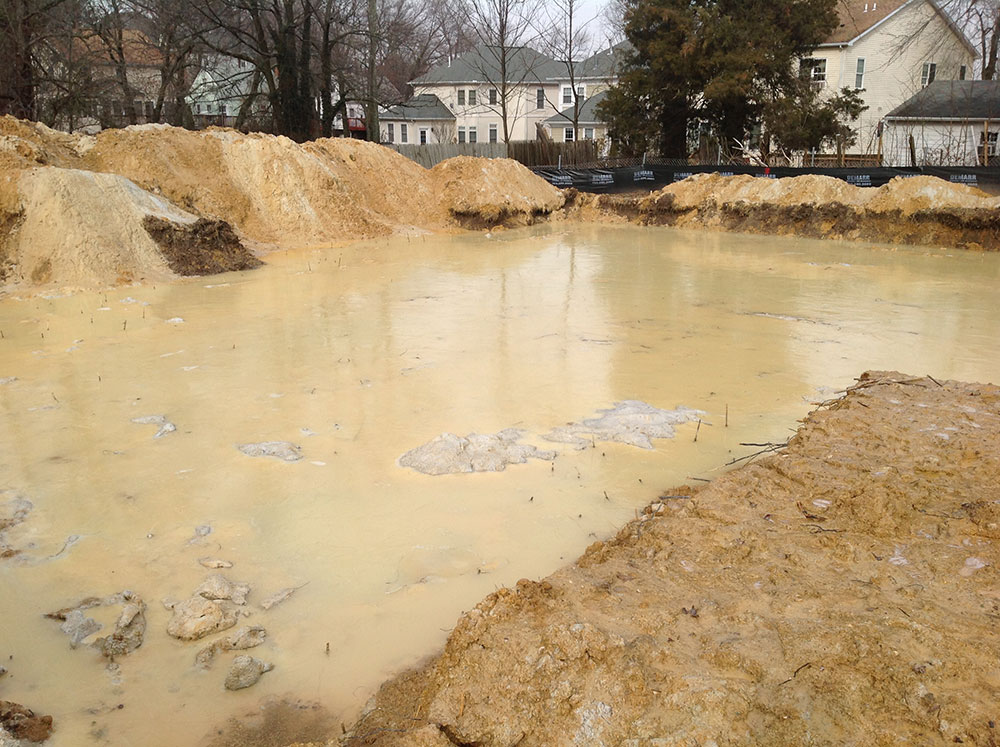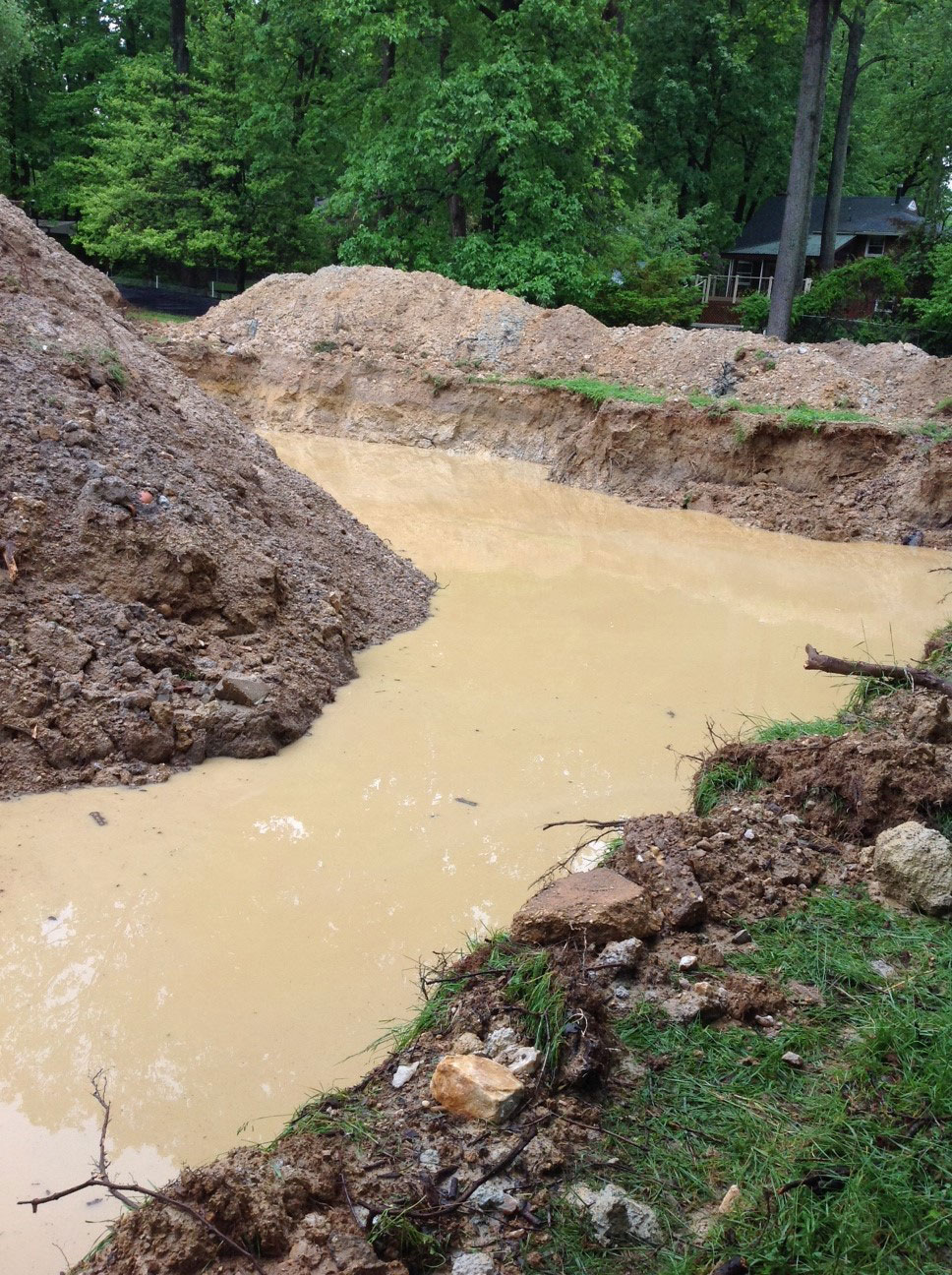Building A Custom Home Series, Part XIV : Unusual Condition

I’ve written a lot about expecting the unexpected when it comes to building your own home especially when we talk about site conditions. If a builder ever claims to be superior in detecting or preventing unexpected site conditions, run. Fast. Because the fact is, no one can predict what will happen during the most unpredictable phase which is excavation. The conditions found during excavation are site specific, not builder specific. So how do you prepare?
I’ve asked Adam Alderson to write about unexpected site conditions. Adam has worked for NDI since 2007. For the first three years, his main focus was managing sites for our clients. He’s seen it all. Well almost.
He’s also my baby brother.
Friends, meet Adam.
********************************************************************
In the 27 years NDI has been building custom homes, we’ve certainly seen our fair share of changes in our industry. Not just in the homes we build or the manner in which they are built, but also with our clients. Those dreaming of a new custom home are coming to us with greater knowledge and understanding of the building industry than ever before. Despite this increased level of know-how and preparation, one fact will always remain constant in this industry; construction is unpredictable.
When it comes to the unexpected, NDI has pretty much seen it all. Despite that experience, there’s no way I can sit here and claim to be able to predict what issues a particular client can expect to endure. I can, however, give you a little bit of insight into one of the scarier phases of construction where we see many of our clients experience the unexpected—excavation.
Finally! Excavation day! Months and months of planning, making selections and decisions, and begging the county to please stop with all the comments has finally come down to the big day. It’s all downhill from here, right? Right? Not exactly. Remember as a kid when you were getting ready to open that birthday present from your Grandparents and you just weren’t exactly sure how this was going to turn out? Am I getting socks? Is this another over-sized burlap sweater? Excavation is a bit like that.
Only instead of socks and burlap sweaters, you’re hoping to avoid things like bad soil, old swimming pools or even an old septic tank that no one knew was there (we came across one once that was still full—burlap sweater indeed). The fact is, when that hole is opened up for the first time, you just never know what you’re going to get.
Don’t get me wrong, while issues during excavation are common, they are still not the norm. Usually we open up a hole and see that Grandma has given us cash! Or, in our case, that the earth has given us suitable soil to support the foundation. If you do come across poor soils (or anything that is unsuitable for foundation support), remediation is usually recommended by a soil engineer. Most commonly, whatever is creating the issue needs to be removed and replaced with something that more ideal. It’s the equivalent of throwing away those unwanted socks and heading out to buy yourself something shiny and new.
This post isn’t meant to scare anyone. It’s meant to create an awareness that, as I mentioned earlier, construction is unpredictable. It doesn’t matter what builder you work with, which site engineer you choose or how many Google searches you perform, issues are out there waiting. Everything is manageable, though. Don’t let a little bump in the road cause you to lose sight of the end result.
The smell of fresh paint and new carpet is getting close…

